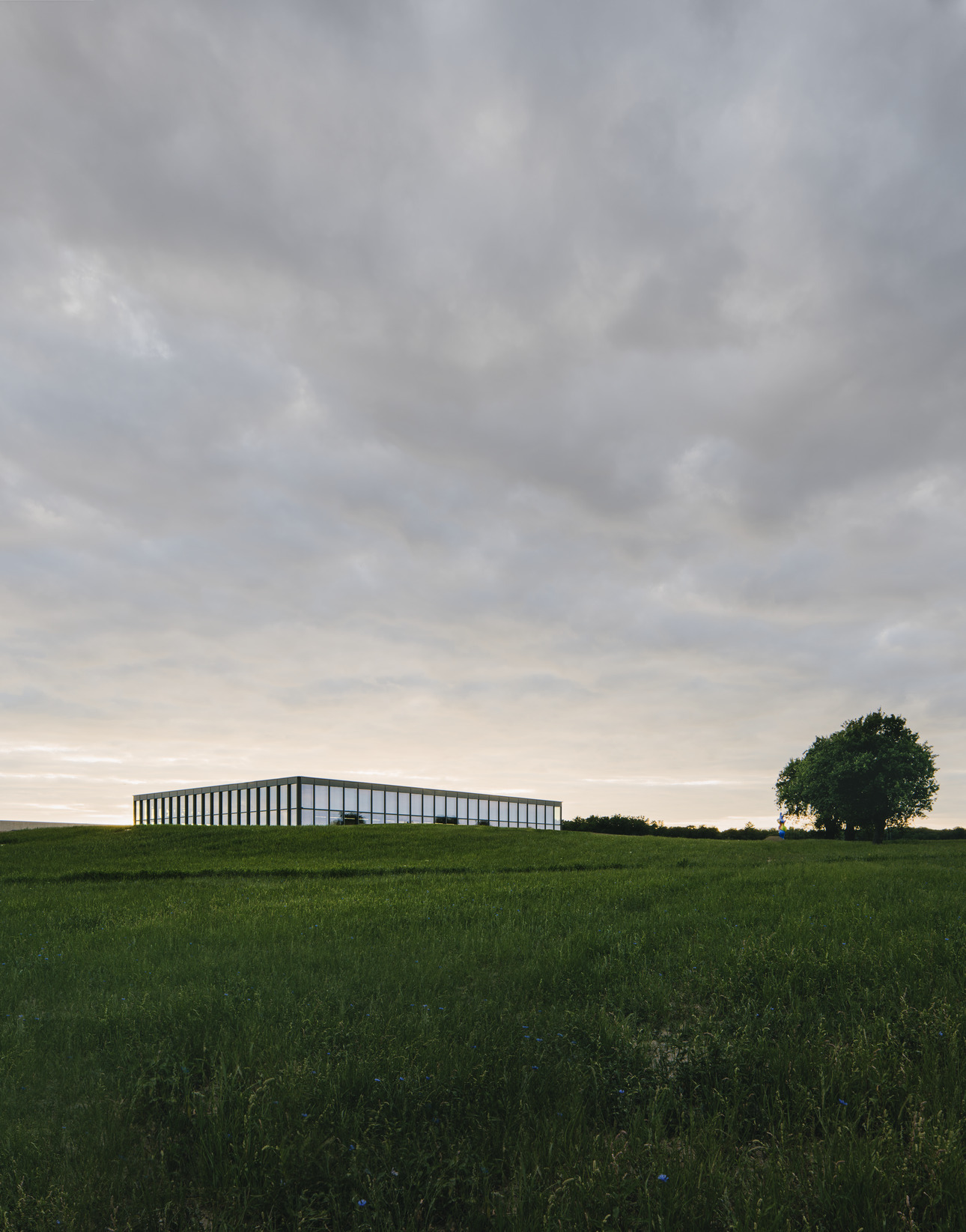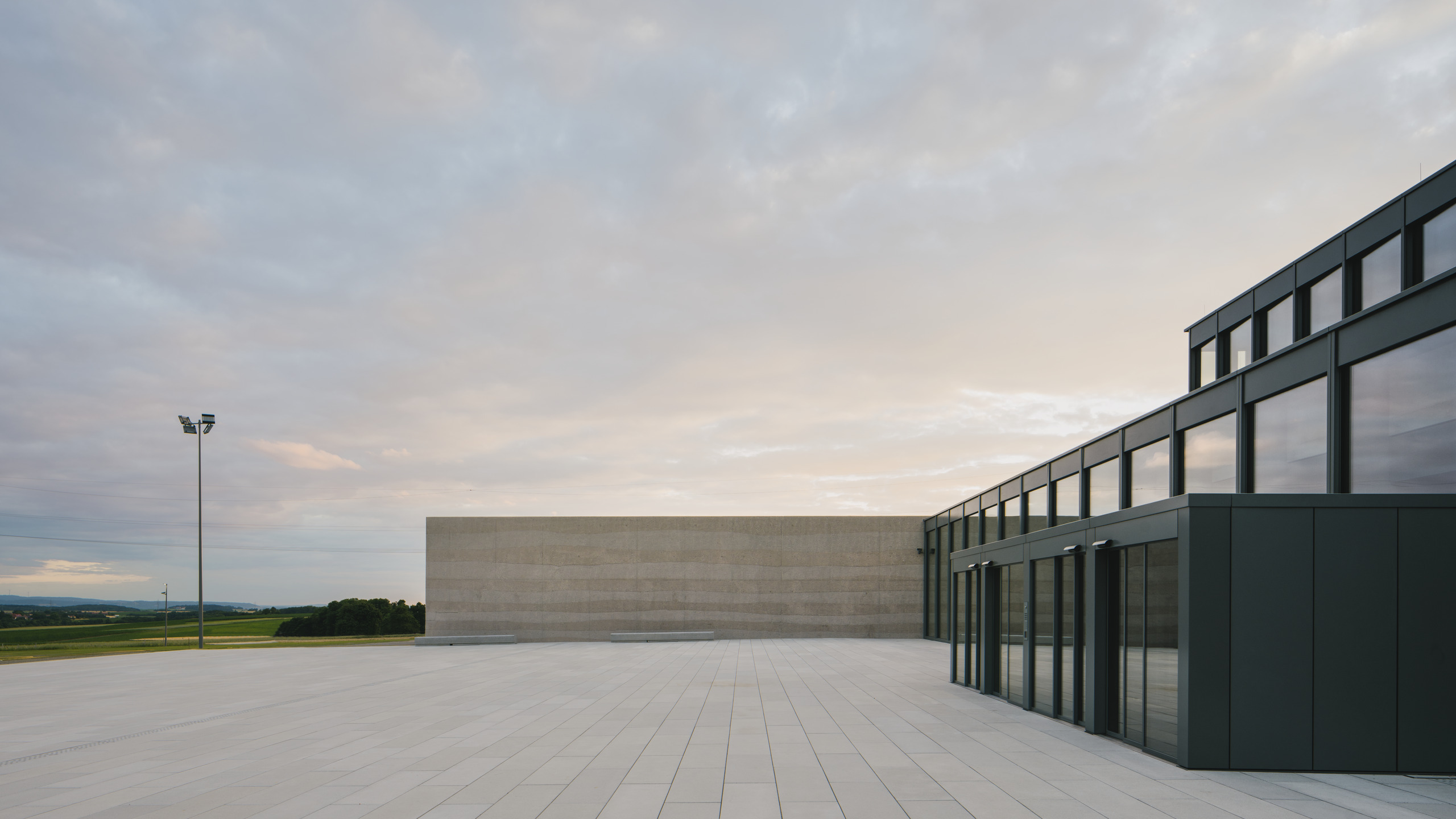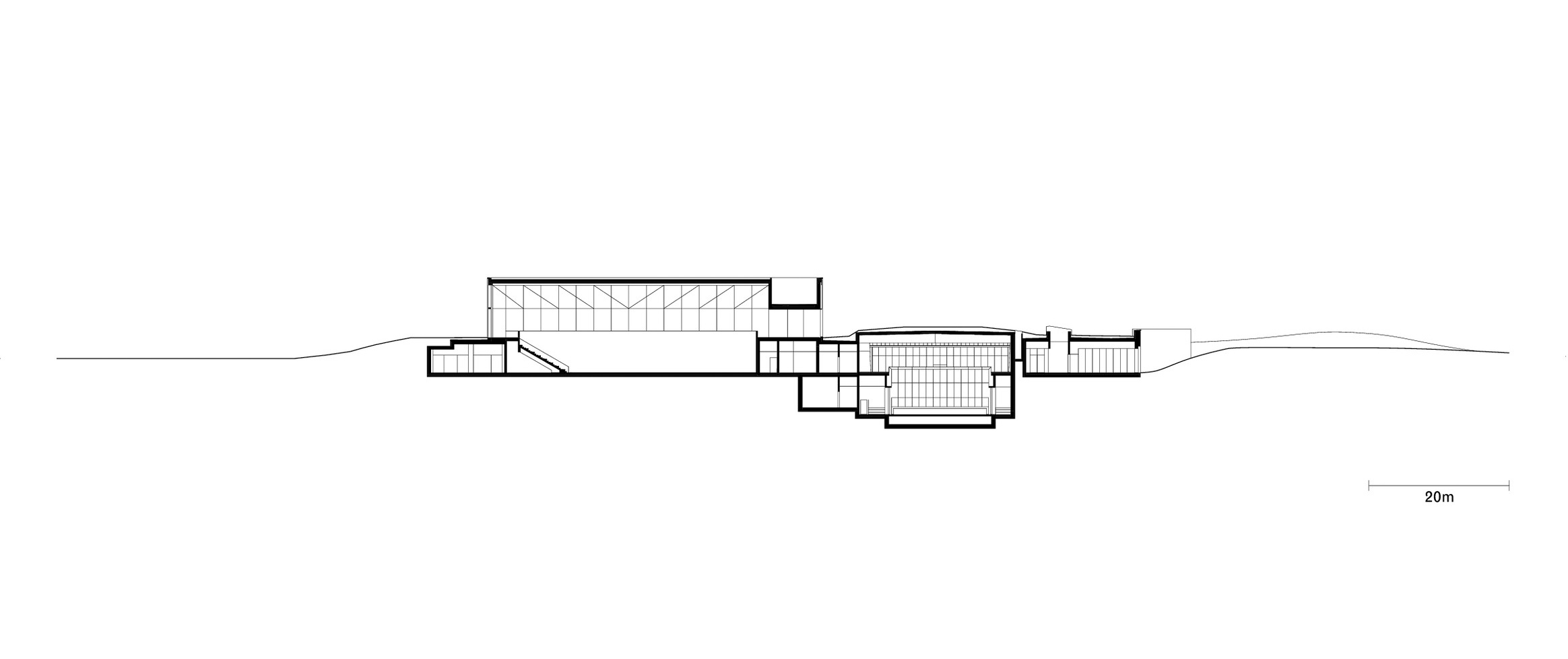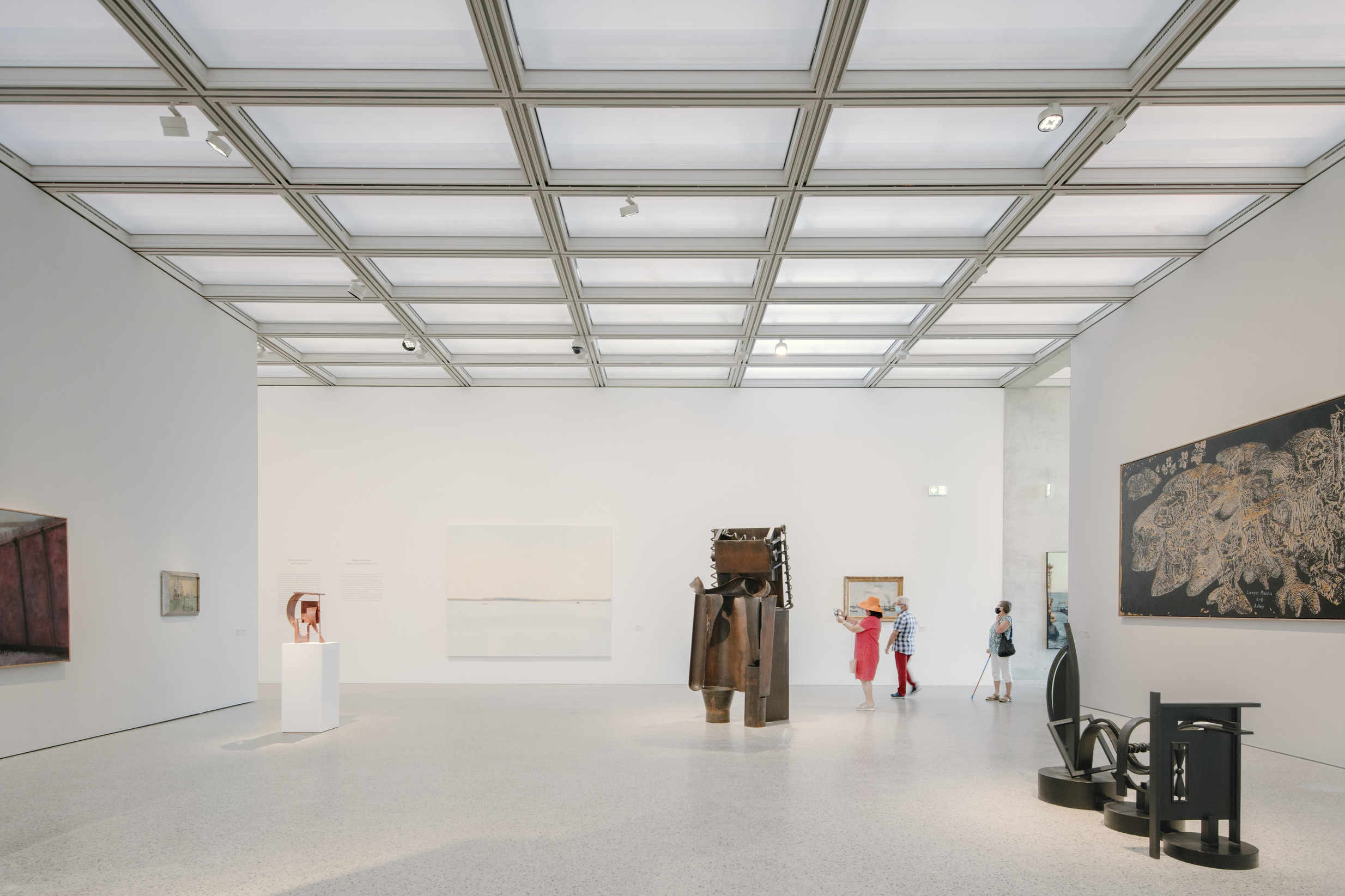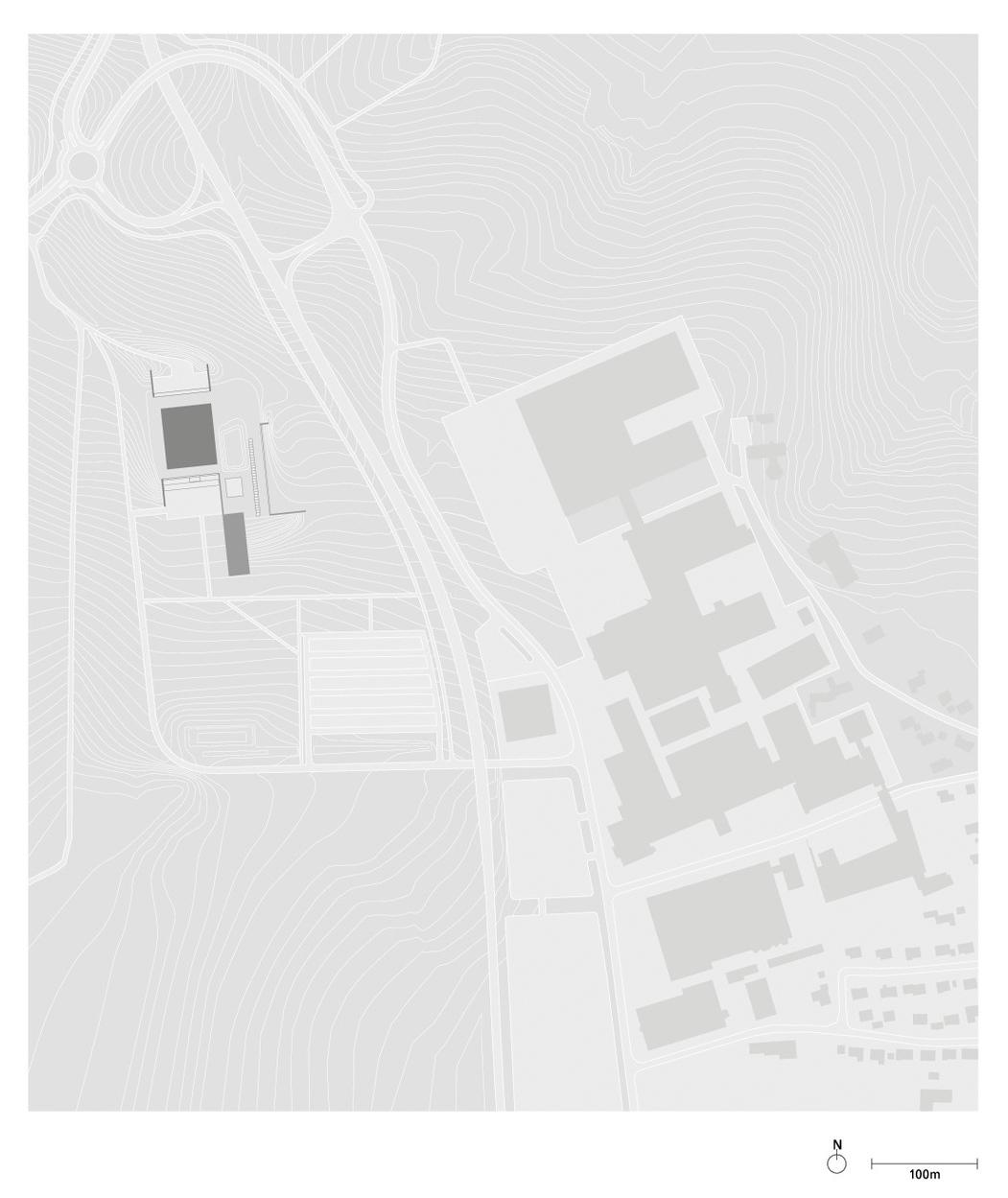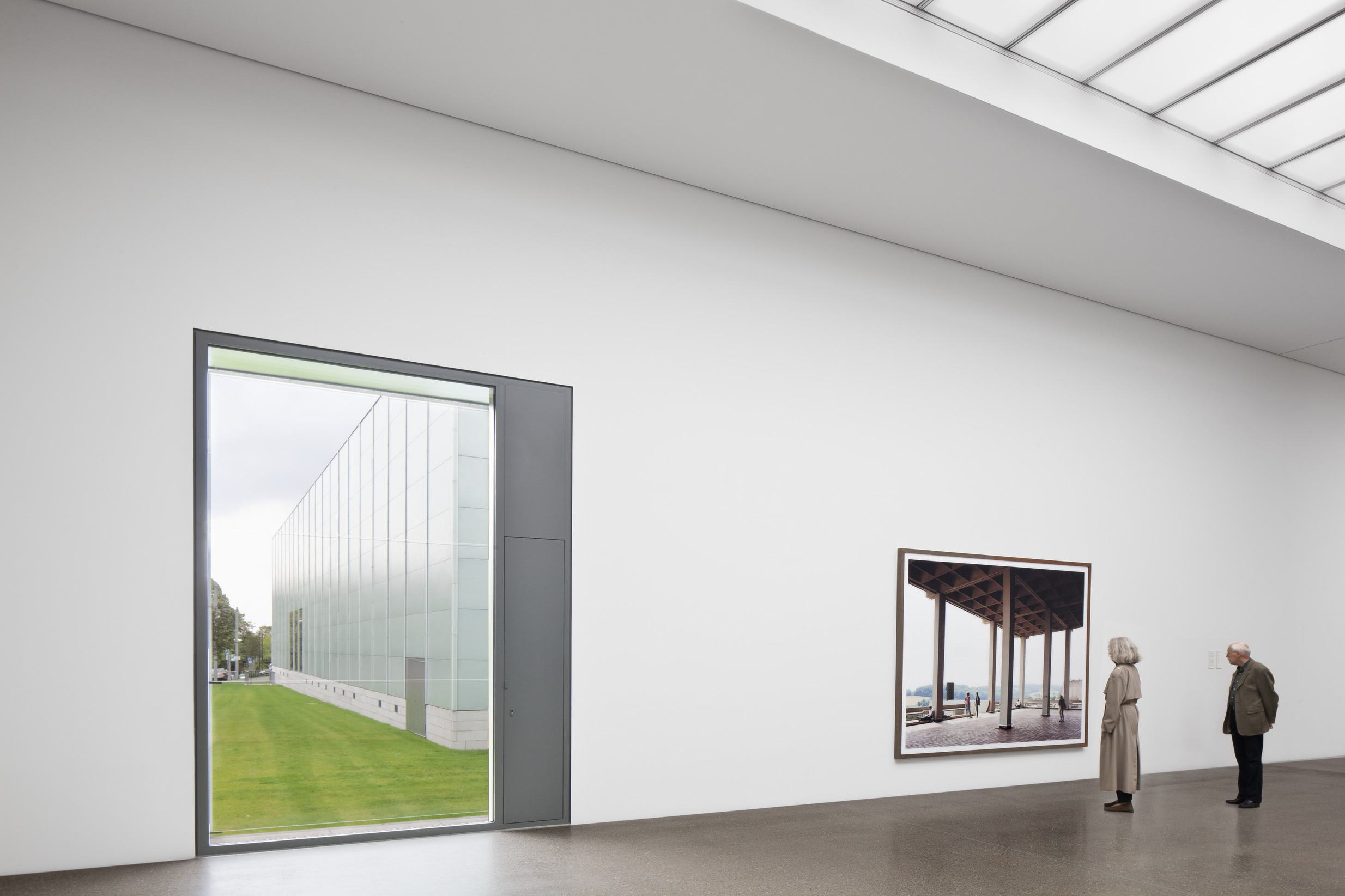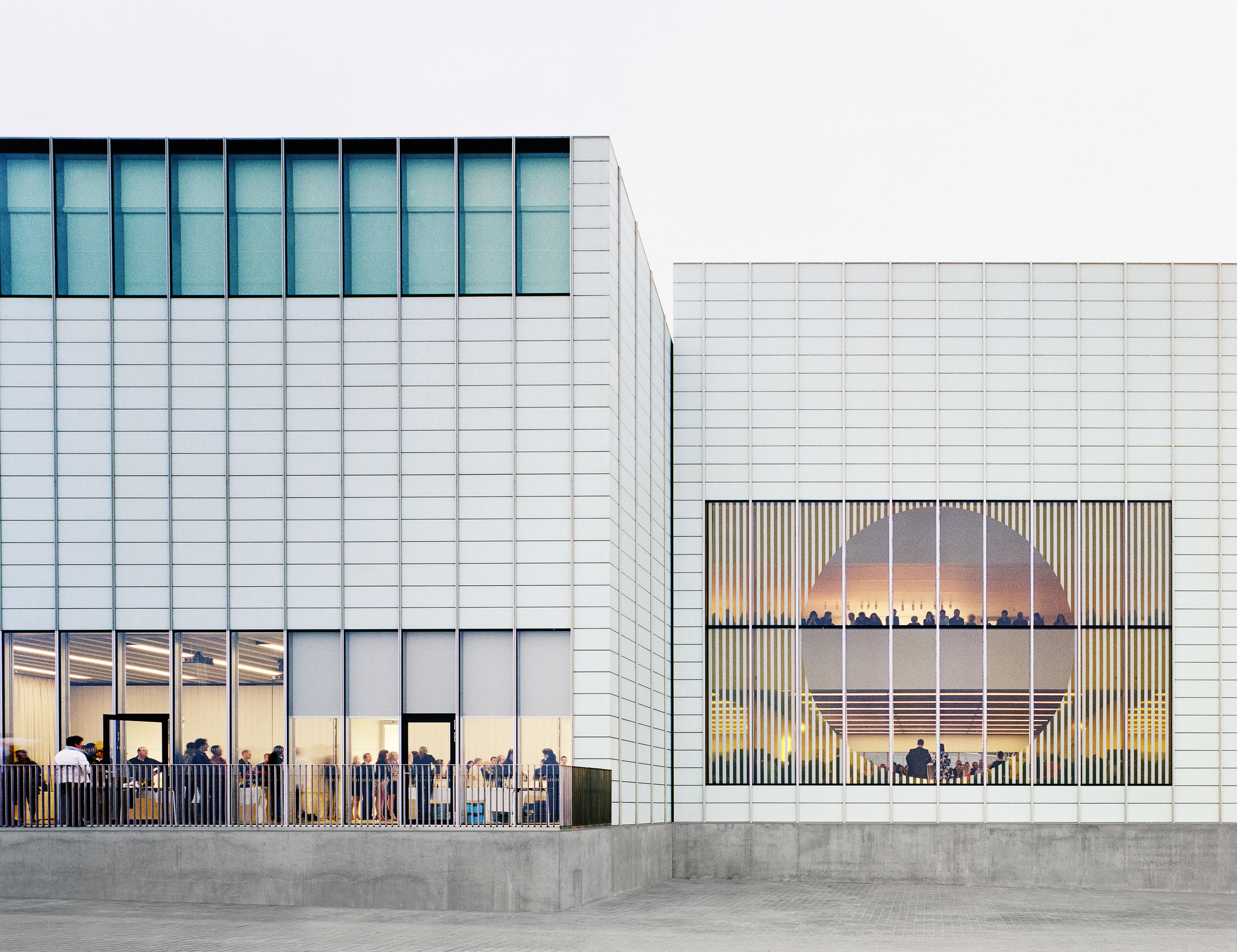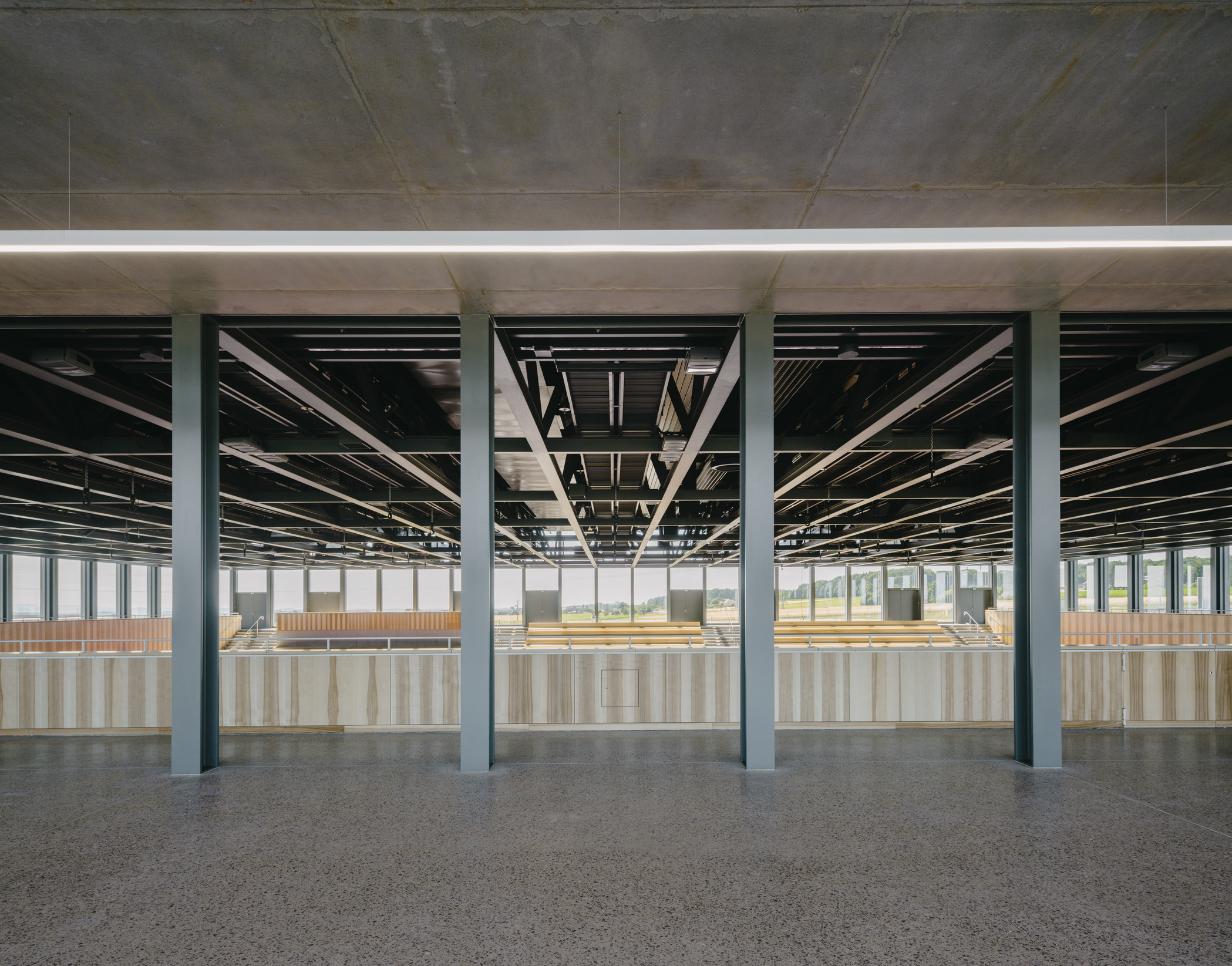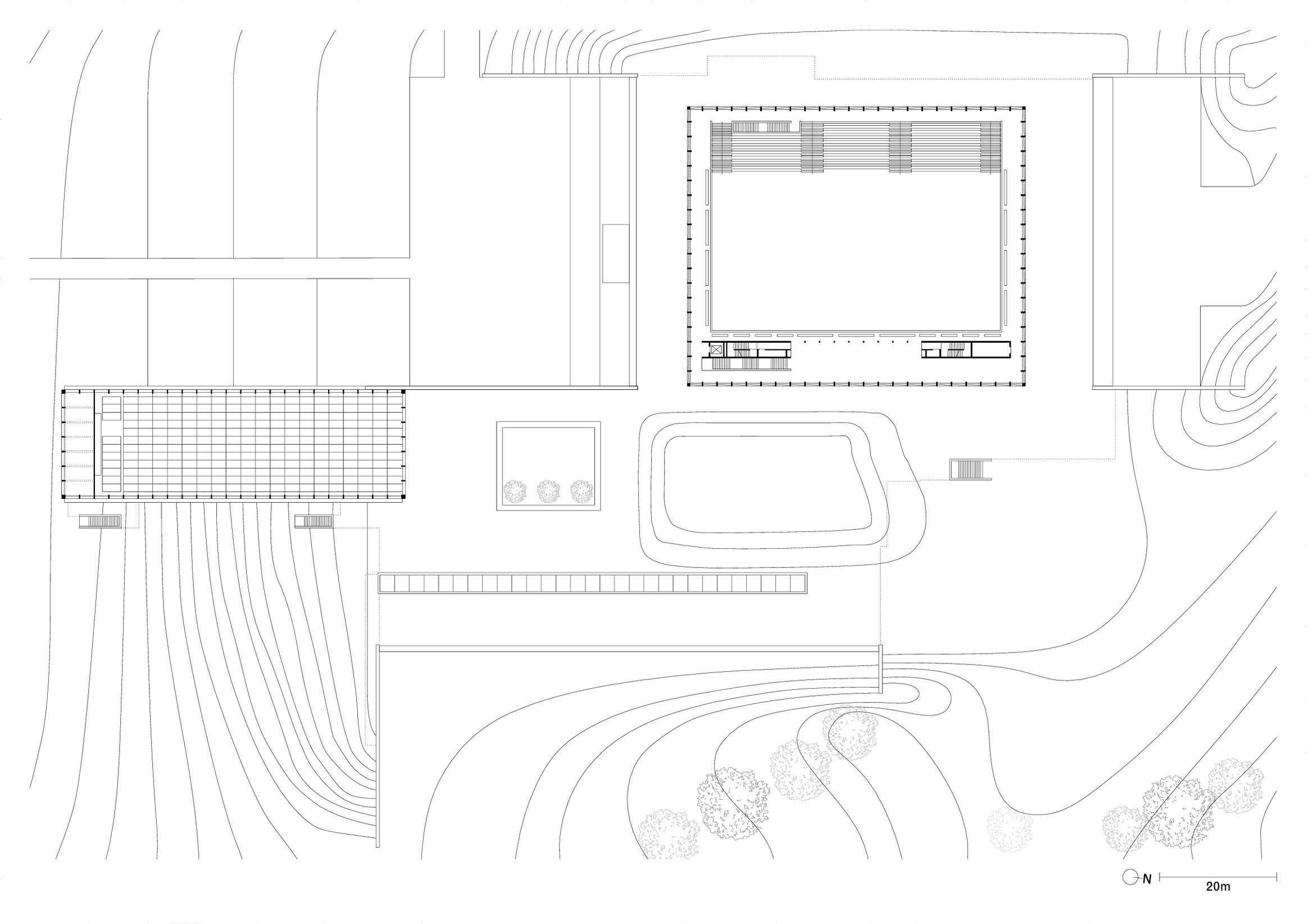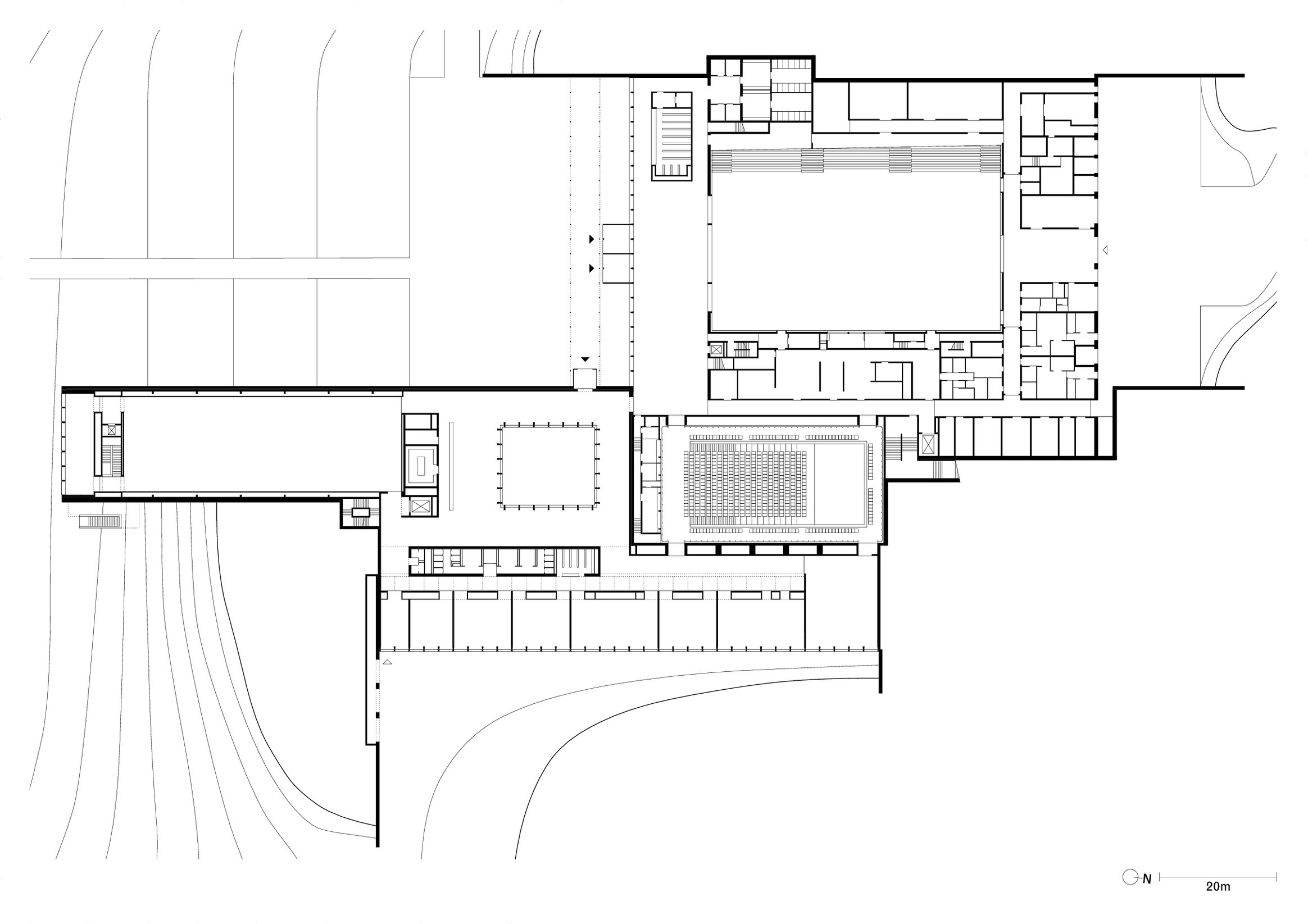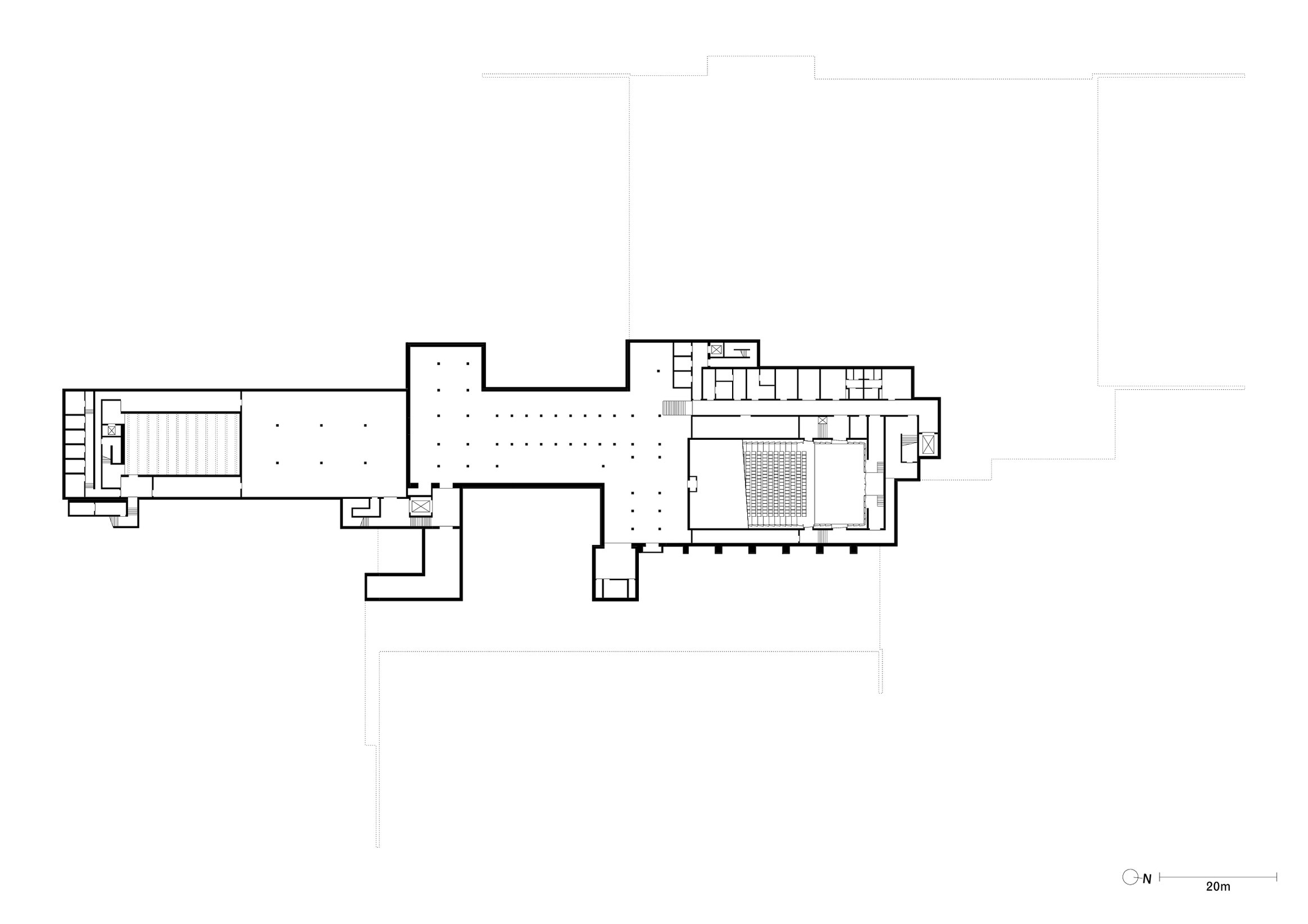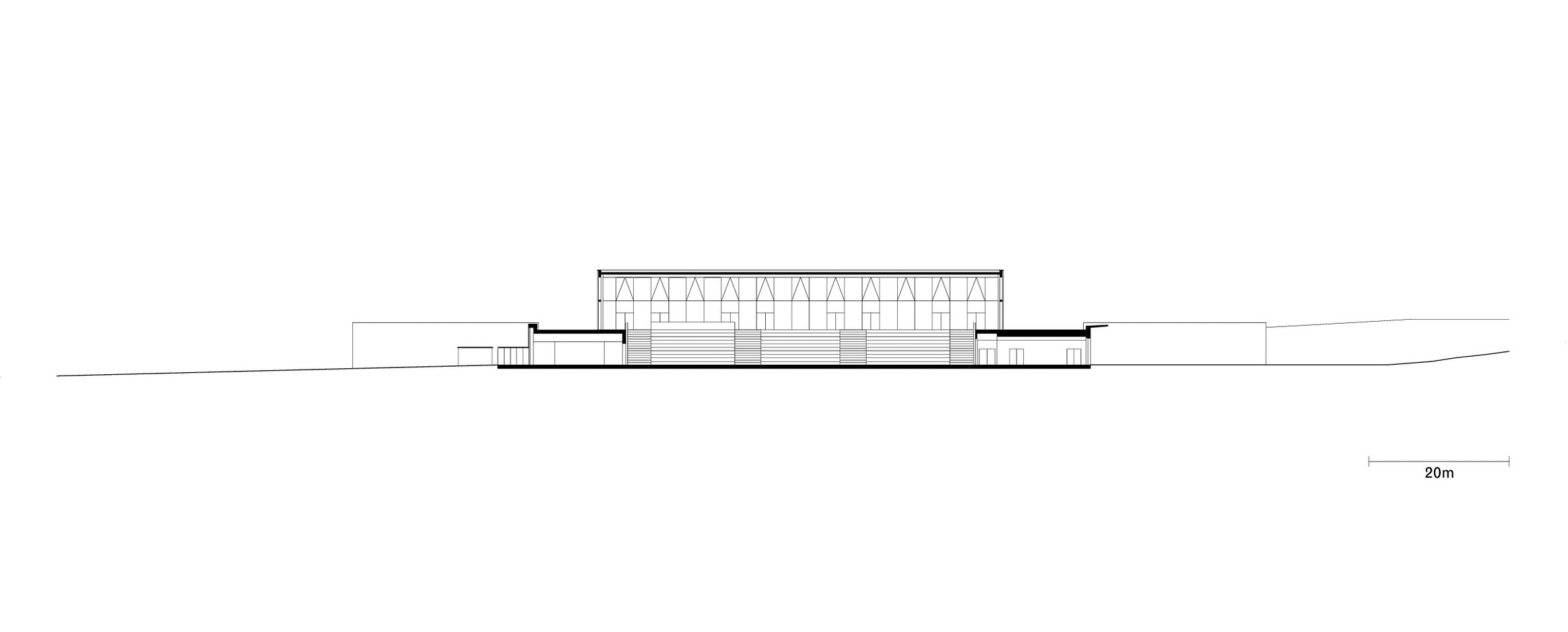Carmen Würth Forum
Künzelsau, Germany
2006–20
The Adolf Würth company is one of the world’s largest retailers of assembly and fastening materials, with its headquarters situated near the town of Künzelsau in southern Germany. The brief called for a large events hall and a smaller hall for chamber music recitals. The complex not only serves the needs of the company but can also be used for external events.
The new building is placed at a short distance from the main office complex and surrounded by open fields. It is embedded in the landscape, with the chamber music hall and the lower part of the events hall hidden beneath a natural mound. Incisions in the hillside are made on either side of the mound and establish two framed external spaces. These are flanked by retaining walls of concrete, poured in layers that make reference to the sediment strata of the site. The larger southern forecourt leads to the main entrance and serves as a forum for diverse outdoor events, such as open-air concerts. The multi-purpose event hall, which is accessed from a naturally lit foyer, provides space for 3,500 people, and has a trussed-steel roof. While the lower half of the hall is sunk into the ground, the upper gallery level rises above the highest point of the site and is glazed on all sides.
The foyer also provides access to the more intimate chamber music hall, which from the outside is only perceptible as a modulation of the landscape. This hall seats up to 600 people and is lined in walnut. The company’s corporate colour of red runs throughout the design of the interior spaces, appearing in the seating of the chamber music hall as well as in the flooring of both the foyer and the events hall. Sculptures from the collection of Reinhold Würth enrich the green spaces surrounding the building.
In a second construction phase, a flexible conference area and an art museum extend the existing concert hall and large event hall. The diverse range of functions further establishes the complex’s conceptual idea of a forum and allows the building to be open continuously, in particular due to its use as a museum. The contemplative exhibition spaces, dedicated to exquisite pieces from the Würth Collection, provide a counterpoint to the event spaces. The museum with its café and foyer includes a large, divisible exhibition hall with daylight atmosphere and a smaller, more intimate graphics art gallery. Through a glazed belvedere, the museum opens up to the vast landscape and initiates a dialogue between the works of art and the place, continued in a sculpture park set in the scenic surroundings of the Carmen Würth Forum.
The clear architecture of the forum adopts the forms and language of industrial architecture, while refining it in terms of materiality. It seeks a sculptural engagement not only with the surrounding landscape, but also with the clear forms of Würth's company premises.
Data and credits
- Competition
- 2006–2007
- Phase 1
- Chamber music hall and event hall
- Project start
- 2011
- Construction start
- 2016
- Completion
- 2017
- Gross floor area
- 11,000m²
- Phase 2
- Conference centre and museum
- Project start
- 2018
- Construction start
- 2018
- Completion
- 2020
- Gross floor area
- 5,500m²
- Client
- Adolf Würth GmbH & Co. KG
represented by Paul Krämer (for all construction concerns)
and C. Sylvia Weber (for all museum concerns) - Project controlling
- Drees & Sommer AG, Stuttgart
- Architect
- David Chipperfield Architects Berlin
- Partners
- David Chipperfield, Harald Müller, Martin Reichert, Alexander Schwarz (Design lead)
- Project architect
- Annette Flohrschütz (Competition, Phase 1), Christian Helfrich (Phase 1), Thomas Schöpf (Phase 1), Marcus Mathias (Phase 2)
- Project team
- Alexander Bellmann, Leander Bulst, Yannic Calvez, Bernhard Danigel, Dirk Gschwind, Paul Hillerkus, Golnar Isrusch, Christopher Jonas, Linda von Karstedt, Ludwig Kaufmann, Maximilian Lohmann, Elsa Pandozi, Thomas Pyschny, Elke Saleina, Thomas Schöpf, Eva-Maria Stadelmann, Nils Stelter, Jaro Venitz, Elisa Zschunke; Graphics, Visualisation: Dalia Liksaite, Ken Polster, Simon Wiesmaier
- Competition team
- Sandra Badji, Markus Bauer, Jan Blaurock, Ute Burdelski, Mirjam von Busch, Florian Dirschedl, Ulrike Eberhardt, Hannah Jonas, Hjördis Klein, Barbara Koller, Martina Maire, Jana Raudnitzky, Stefanie Schleipen, Marika Schmidt, Moritz Uhlmann; Graphics, Visualisation: Dalia Liksaite, Antonia Schlegel, Ute Zscharnt
- Executive architect
- Kraft + Kraft Architekten, Schwäbisch Hall
(Procurement, Construction supervision)
represented by Gerd Eckert and Markus Masseretti - Landscape architect
- realgrün Landschaftsarchitekten, Munich (Phase 1)
- Structural engineer
- RPB Rückert GmbH, Heilbronn (Phase 1)
Mayer-Vorfelder und Dinkelacker Ingenieurgesellschaft für Bauwesen GmbH und Co KG, Sindelfingen (Phase 2) - Services engineer
- ZB Zimmermann und Becker GmbH, Heilbronn (Phase 1, phase 2)
ibb Burrer & Deuring Ingenieurbüro GmbH, Ludwigsburg (Phase 1)
PBS Ingenieurgesellschaft mbH, Aalen (Phase 2) - Building physics
- Müller-BBM GmbH, Planegg (Phase 1)
Horstmann + Berger, Altensteig (Phase 2) - Fire consultant
- Halfkann + Kirchner, Stuttgart
- Theatre consultant
- Bühnenplanung Walter Kottke Ing. GmbH, Bayreuth (Phase 1)
- Lighting consultant
- Arup Deutschland GmbH, Berlin (Phase 2)
- Façade consultant
- Reba Fassadentechnik AG, Chur
- Photography
- Simon Menges
- Selected Awards
- Hugo Häring Award, Gute Bauten 2017

